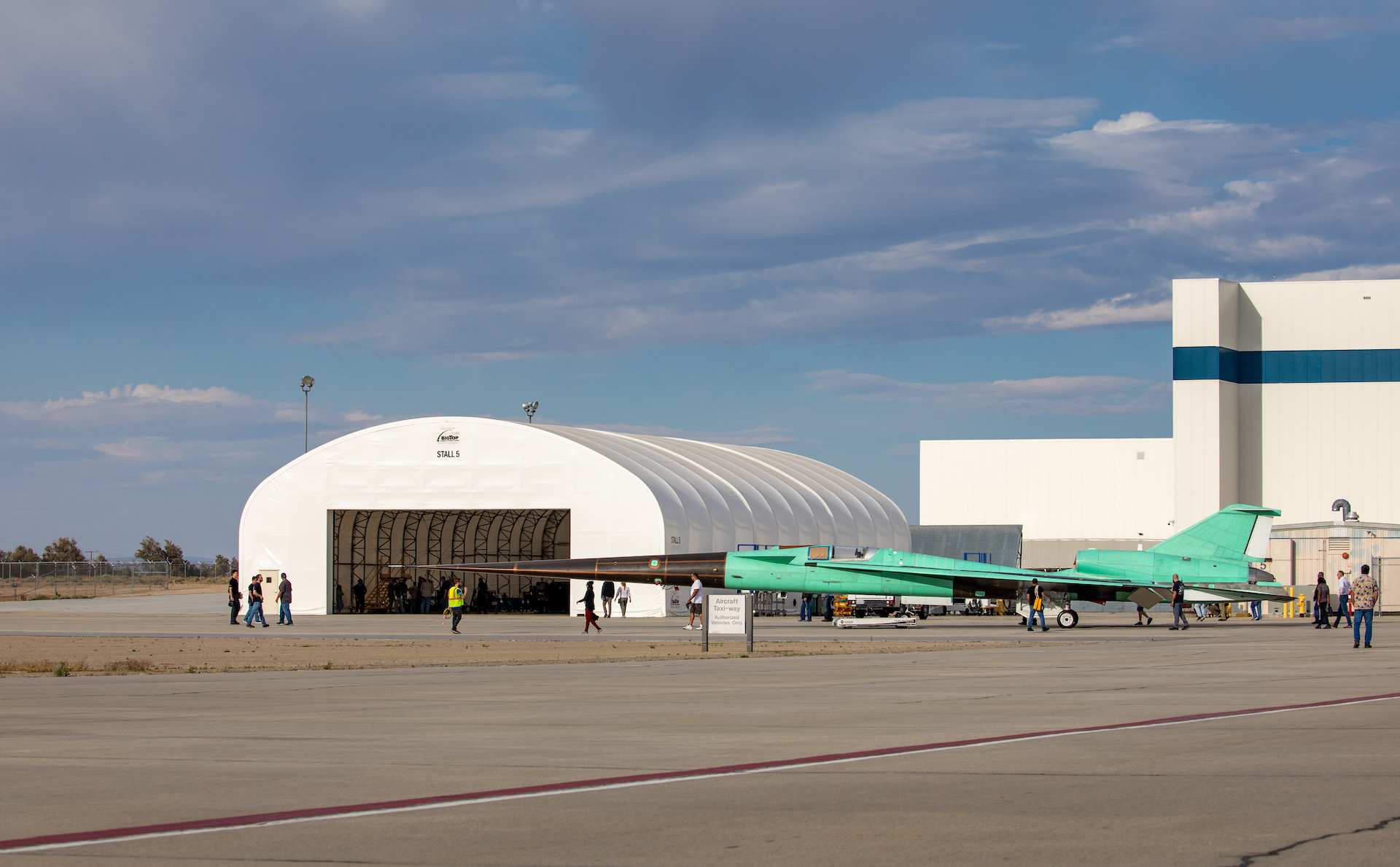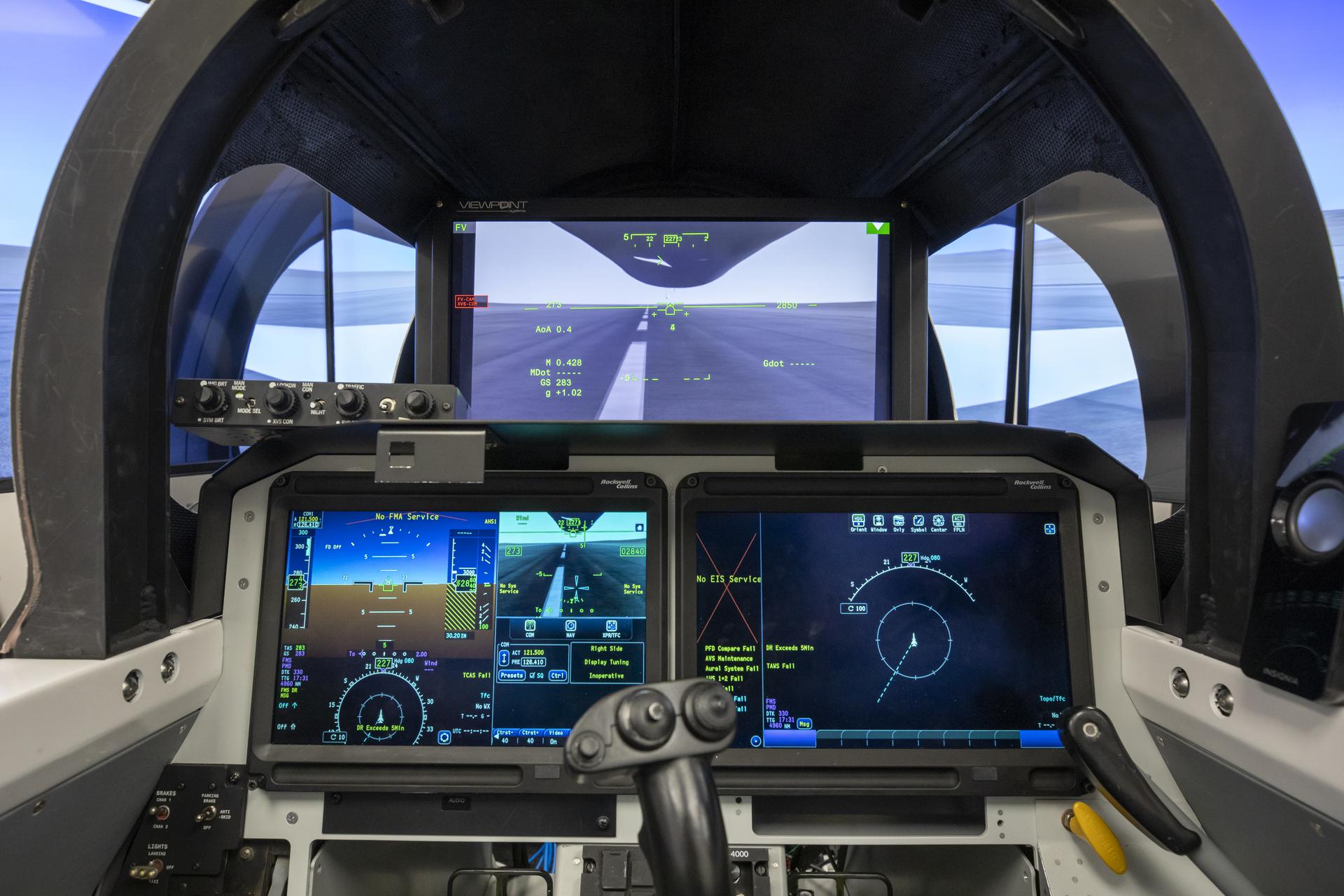Watch NASA's sci-fi-looking X-59 'quiet' supersonic jet roll out of the hangar (video)
Ride into the danger zone with this epic roll-out video.
NASA's X-59 looks straight out of science fiction in a new video released by Lockheed Martin.
The X-59 QuessT (Quiet SuperSonic Technology) is an experimental jet that aims to reduce the amount of sonic boom produced by aircraft breaking the sound barrier. Rather than the ground-shaking rumble produced by jets reaching the speed of sound, or Mach 1, the X-59 is expected to create a thump similar to the sound of a nearby car door being slammed.
Lockheed Martin, who is building the jet through its Skunk Works advanced aircraft manufacturing facility in Palmdale, California, shared a video showing the X-59 rolling out of the hangar looking positively ready for the skies.
Related: NASA's X-59 'quiet' supersonic jet looks ready to fly in new photos
The footage shows off the unique geometry of the X-59, which features a sharp, extended nose section measuring 38 feet (11.5 meters) in length. Because of the length of this nose section, however, pilots flying the X-59 won't be able to accurately see out of the front of the cockpit, which doesn't even feature a forward-facing windscreen.
To remedy this, the experimental jet features what NASA calls an External Vision System, or XVS. XVS is essentially a closed-circuit video system consisting of a forward-facing camera and a cockpit-mounted display in front of the X-59's pilot. The system uses "custom image processing software and camera systems, to create an augmented reality view of the X-59 pilot’s forward line-of-sight along with graphical flight data overlays," according to a 2019 NASA statement.
Now that the X-59 is assembled, NASA and Lockheed Martin teams will conduct ground testing to ensure the aircraft is safe and ready to fly. Once it's ready for flight testing, the jet will fly over residential areas in order to analyze how people on the ground react to its planned reduced sonic boom. Once that data is in hand, NASA will pass it on to regulatory agencies such as the Federal Aviation Administration (FAA) to seek approval for commercial supersonic flight.
Breaking space news, the latest updates on rocket launches, skywatching events and more!
Supersonic flights above land and within a certain distance of the United States coastline have been banned since 1973, according to the FAA. NASA hopes to develop aircraft that would enable quieter supersonic flight, which could one day reduce domestic air travel times by half if approved.

Brett is curious about emerging aerospace technologies, alternative launch concepts, military space developments and uncrewed aircraft systems. Brett's work has appeared on Scientific American, The War Zone, Popular Science, the History Channel, Science Discovery and more. Brett has degrees from Clemson University and the University of North Carolina at Charlotte. In his free time, Brett enjoys skywatching throughout the dark skies of the Appalachian mountains.


